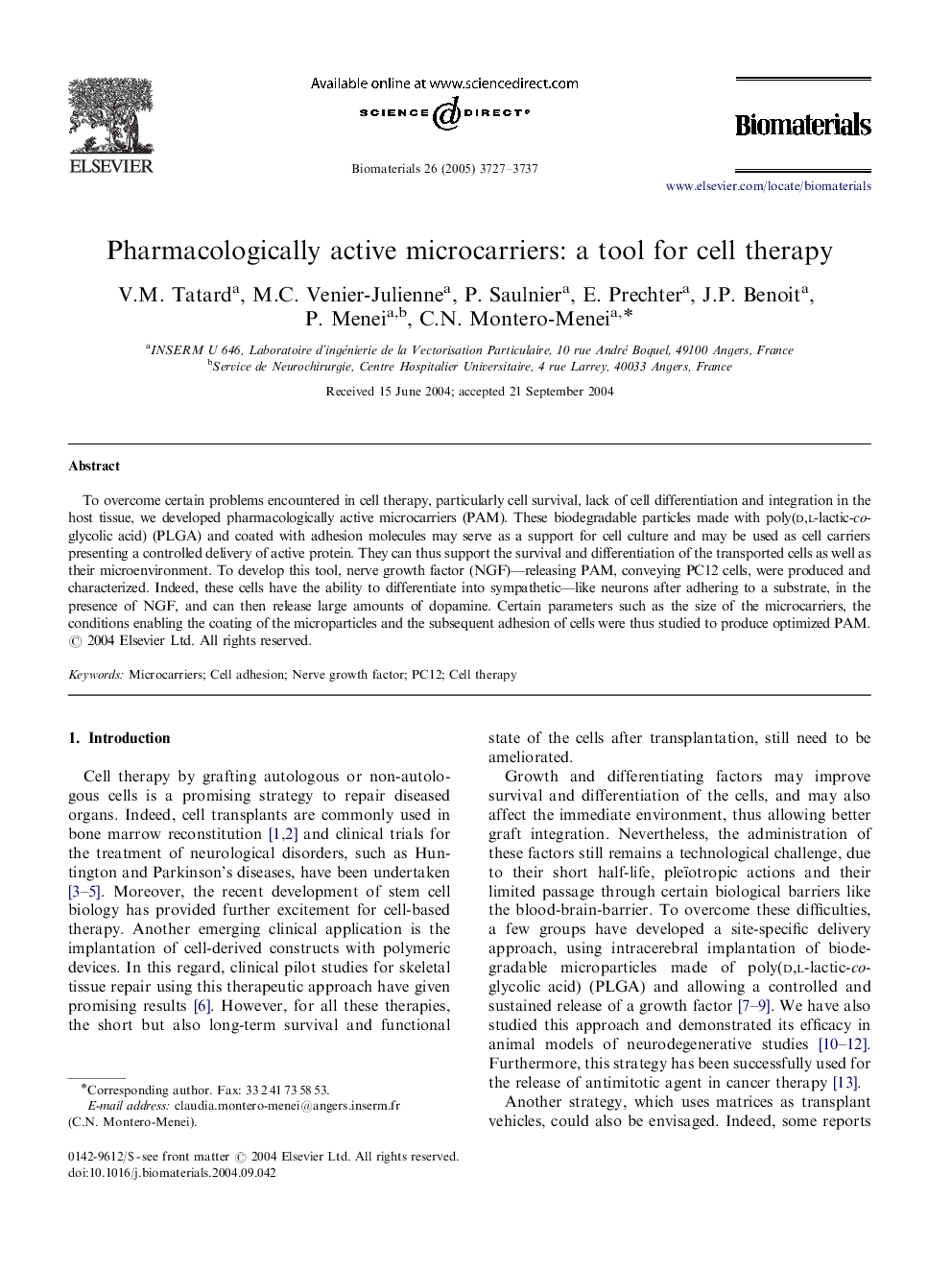| Article ID | Journal | Published Year | Pages | File Type |
|---|---|---|---|---|
| 12754 | Biomaterials | 2005 | 11 Pages |
To overcome certain problems encountered in cell therapy, particularly cell survival, lack of cell differentiation and integration in the host tissue, we developed pharmacologically active microcarriers (PAM). These biodegradable particles made with poly(d,l-lactic-co-glycolic acid) (PLGA) and coated with adhesion molecules may serve as a support for cell culture and may be used as cell carriers presenting a controlled delivery of active protein. They can thus support the survival and differentiation of the transported cells as well as their microenvironment. To develop this tool, nerve growth factor (NGF)—releasing PAM, conveying PC12 cells, were produced and characterized. Indeed, these cells have the ability to differentiate into sympathetic—like neurons after adhering to a substrate, in the presence of NGF, and can then release large amounts of dopamine. Certain parameters such as the size of the microcarriers, the conditions enabling the coating of the microparticles and the subsequent adhesion of cells were thus studied to produce optimized PAM.
